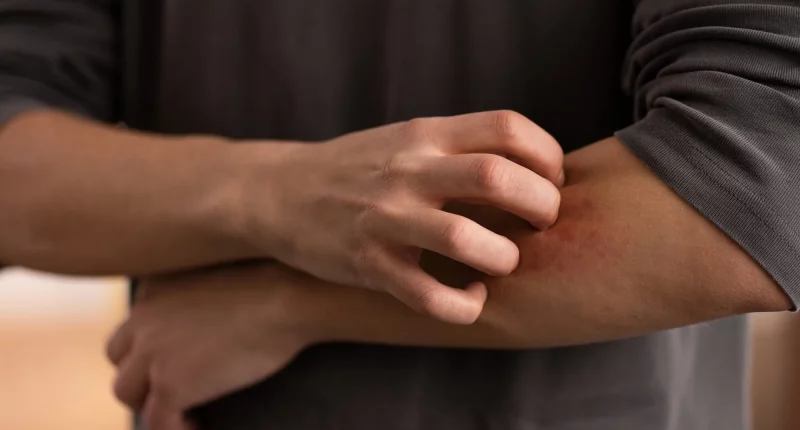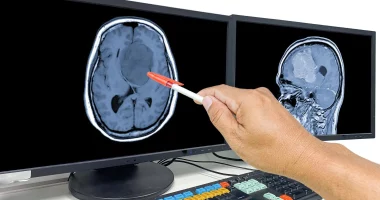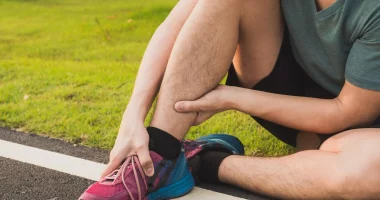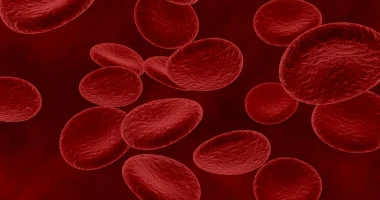Pemphigoid is a group of uncommon autoimmune diseases that lead to rashes and blisters on the skin and inside the mouth and nose.
In pemphigoid, the immune system mistakenly produces antibodies that attack the skin cells. This causes a reaction where the top layers of skin separate from the lower layers.
Anyone can get pemphigoid, but it mostly affects older adults. It can also start during pregnancy or because of particular treatments and medications.
At the moment, there’s no permanent cure for pemphigoid, but there are treatments available to manage the symptoms.
Symptoms
Bullous pemphigoid typically causes blisters on certain areas of the body like the lower torso, armpits, inner thighs, groin, soles of the feet, and palms of the hands.
It shows up as itchy patches of irritated, raised skin with blisters that don’t break easily. These blisters can be filled with bloody or clear fluid and vary in size from small to large.
The skin around the blisters may look normal or appear red. While the symptoms can be scarring, pain usually doesn’t happen.
Individuals with bullous pemphigoid often have times when symptoms flare up, along with periods without signs. This condition can last for many years.
Around 10% to 40% of people with bullous pemphigoid also get blisters on their mucous membranes, like in the mouth.
In the United States, about 7 to 10 out of every 1 million people develop bullous pemphigoid each year.
Though rare, bullous pemphigoid is the most common cause of blistering skin disorders in people over 65 years old. The risk of getting it goes up significantly after 70 years.
Some treatments and medicines can trigger bullous pemphigoid, and certain health conditions may increase the chances of getting it.
Risk factors
Several factors contribute to an increased risk of developing bullous pemphigoid. Skin injuries, such as severe infections, wounds, and burns, are known to trigger the condition. Exposure to ultraviolet light, particularly through UV-based therapies, and ionizing radiation from radiation treatments also play a role in its onset.
Certain medications can also increase the risk, including penicillin, diuretics, sulfasalazine, and etanercept. Conditions like psoriasis and neurological disorders like Parkinson’s disease or dementia have been linked to higher incidences of bullous pemphigoid. Additionally, autoimmune diseases like Grave’s disease, affecting the thyroid, are considered risk factors for developing this condition. These various factors contribute to the complex interplay that can lead to the onset of bullous pemphigoid in susceptible individuals.
Diagnosis
Diagnosis of bullous pemphigoid typically involves examining the characteristic blisters that form on the skin. Healthcare providers often confirm the diagnosis through a skin biopsy, where a small sample of tissue is taken for examination under a microscope. In cases where the symptoms are less typical, such as when there is an itchy skin rash without obvious blisters, blood tests are also necessary to detect specific antibodies associated with the condition.
Differentiating bullous pemphigoid from other skin disorders that cause blisters involves observing certain distinguishing factors. Unlike some similar conditions, bullous pemphigoid typically spares the neck and head areas from blistering. Additionally, it tends to involve minimal or no symptoms affecting mucous membranes like those in the mouth or genitals. Another distinguishing feature is the absence or minimal presence of scarring or pitting of the skin, which can help doctors pinpoint the correct diagnosis and begin appropriate treatment promptly. These diagnostic clues help healthcare providers accurately identify bullous pemphigoid and distinguish it from other potential causes of blistering skin conditions.
Treatment and Outlook
Treatment for bullous pemphigoid typically revolves around steroid-based medicines, which are effective in managing persistent or severe symptoms. Healthcare providers aim to use the lowest effective dose of steroids and gradually taper off the medication once symptoms improve or resolve.
A common treatment goal is to administer 5 to 10 mg of prednisone regularly. It can take many weeks of steroid therapy to alleviate symptoms, and complete resolution may take months to years in some cases.
While symptoms may resolve spontaneously in some individuals, bullous pemphigoid can pose serious risks, especially in older individuals or those with compromised immune systems. Blisters that rupture and become infected can lead to potentially life-threatening bloodstream infections.
Despite medical intervention, severe episodes of bullous pemphigoid can carry significant risks. Studies indicate that 1-year death rates for these cases may range from 25% to 30%. Additionally, there is emerging research suggesting a possible association between bullous pemphigoid and the reappearance of certain cancers, further complicating long-term outlooks for affected individuals.
Effective management and close medical supervision are crucial for improving outcomes and reducing complications associated with bullous pemphigoid.
Prevention
Preventing bullous pemphigoid primarily includes managing known risk factors and avoiding triggers that may provoke the condition. Here are some strategies that may help in prevention:
- Avoiding Skin Trauma: Reducing the risk of skin injuries, like burns, cuts, and infections, which can trigger bullous pemphigoid. Promptly treat any skin wounds to prevent complications.
- Sun Protection: Protect your skin from extreme sun exposure, particularly if you are undergoing UV-based therapies for other conditions. Use sunscreen, wear protective clothing, and seek shade during peak sunlight hours.
- Medication Awareness: Be aware of medications that may exacerbate bullous pemphigoid, like certain antibiotics (e.g., penicillin), diuretics, and medications used for autoimmune conditions. Discuss alternative options with your healthcare provider if necessary.
- Health Monitoring: If you have a history of autoimmune diseases like Parkinson’s disease, dementia, or Grave’s disease, or if you are undergoing treatments that may affect your immune system, monitor your health closely. Early detection and management of symptoms can help prevent complications.
- Regular Check-ups: Maintain regular visits with your healthcare provider, especially if you are at higher risk due to age or underlying health conditions. This allows for early detection of any potential symptoms or complications related to bullous pemphigoid.
While it may not be possible to completely prevent bullous pemphigoid, these preventive measures can help reduce the likelihood of developing the condition or experiencing severe symptoms. Always consult with healthcare professionals for personalized advice and management strategies based on your individual health needs.
Summary
Bullous pemphigoid is an uncommon autoimmune condition causing skin rashes and blisters, more common in older individuals and triggered by skin injuries, UV exposure, and certain medications. Diagnosis involves skin biopsy or blood tests, with distinguishing features like sparing of neck and head, minimal mucous membrane involvement, and little scarring.
Treatment focuses on steroid medications to alleviate symptoms, with careful management to minimize side effects. Severe cases can lead to infections and higher mortality rates, particularly in older or immunocompromised individuals. Prevention strategies include sun protection, avoiding skin trauma, and monitoring health closely for early detection and management.









